This article dives into the various types of mands in Applied Behavior Analysis (ABA) therapy, which can really boost communication skills for children. It highlights how personalized mand training is key! This includes both vocal and non-vocal requests, advanced mands, and the vital role of parental involvement in reinforcing these skills. Ultimately, this approach fosters independence and improves behavioral outcomes.
Let’s explore this together! By understanding these concepts, you can help your child thrive and communicate more effectively. We’re here to help you every step of the way!
Effective communication is the cornerstone of human interaction, yet many children face challenges in expressing their needs and desires. In the world of Applied Behavior Analysis (ABA), understanding the different types of mands is essential for helping these kids thrive. This article dives into the various forms of mand training, showing how personalized approaches can empower children to communicate better and gain independence.
But what happens when traditional methods just don't cut it? Exploring innovative strategies in mand training might just hold the key to unlocking your child's full communicative potential. Let’s explore this together!
At Rori Care, we believe in a personalized approach to ABA therapy that truly focuses on what matters most: effective communication. We start with types of mands ABA training, which establishes the groundwork for our students to express their needs and desires. Each child is unique, and our skilled behavior analysts take the time to evaluate their individual requirements, crafting tailored behavior intervention plans that empower them to communicate better and navigate the world with confidence.
This customized approach not only helps young individuals learn to communicate but also resonates with their personal experiences and preferences. We set clear, measurable objectives for behavior change, giving families transparent benchmarks to track progress. Our strategies are rooted in the latest research, ensuring we use the most effective methods to foster behavior change.
But we don’t stop there! We continuously assess and adjust our plans, modifying strategies as needed to enhance results for each child. Plus, we’re here to support families throughout the therapy process, reinforcing our joint effort in promoting independence and skill development. Let’s explore this journey together—your child’s growth is our priority!
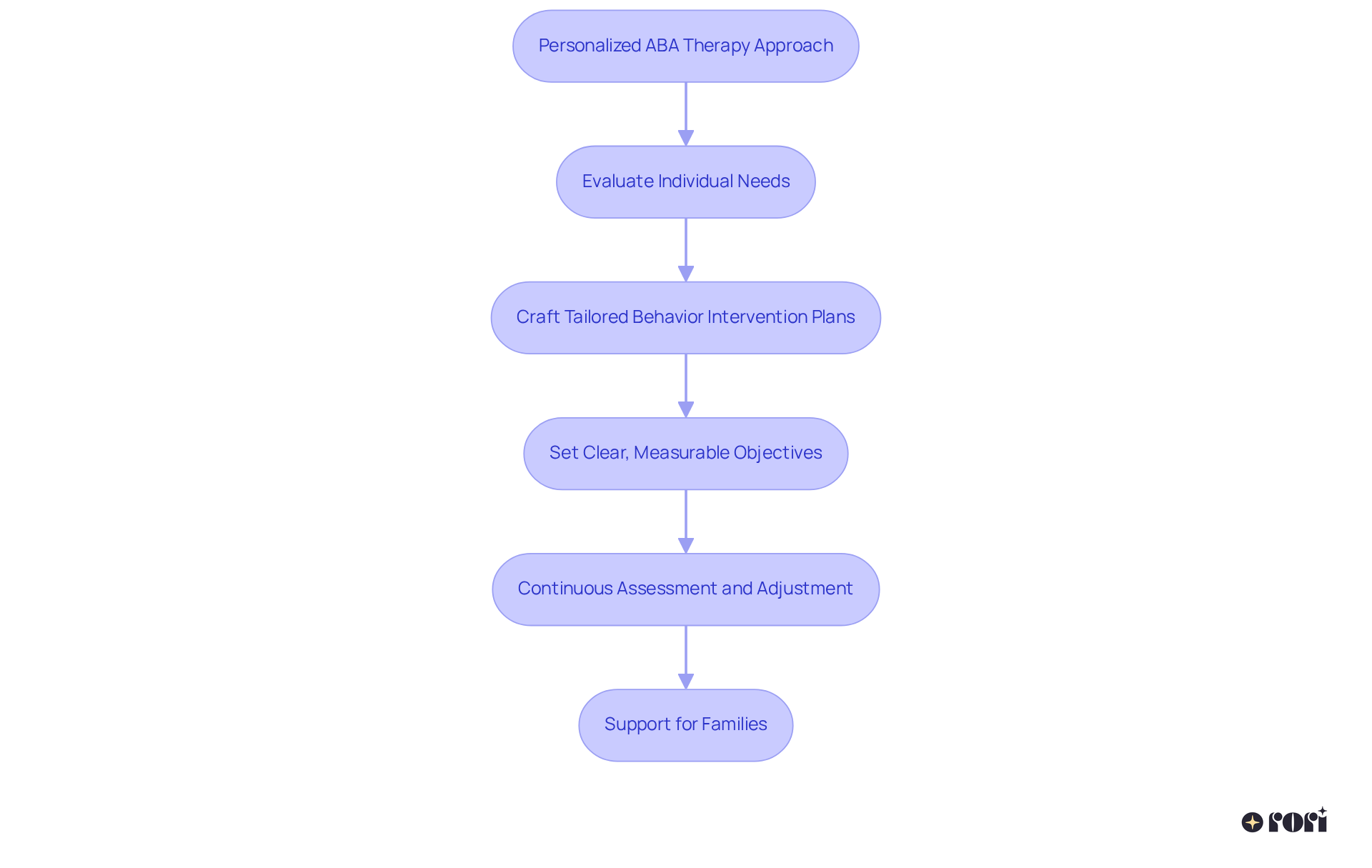
Vocal mands are an example of the types of mands ABA, where young kids use their words to express their needs—like saying 'juice' when they're thirsty. This simple yet powerful way of communicating is crucial because it lays the groundwork for their future language skills. Plus, it fits perfectly into a patient-centered approach that caters to each child's unique needs.
To help kids vocalize more, techniques like modeling and reinforcement come into play. These strategies boost their confidence in speaking up! It’s also important to get parents involved; research shows that when parents fully engage during suggested hours, about 90% of kids make significant progress. Isn’t that encouraging?
By understanding the principles of ABA and the various types of mands ABA, parents can make informed choices that positively impact their child's development. This not only leads to better behavioral outcomes but also strengthens family dynamics. And here’s a key point: ABA therapy is the only scientifically proven treatment for autism that’s covered by insurance, making it an invaluable resource for families.
Moreover, educating caregivers can significantly enhance the support they provide, further promoting their child's growth. Together, we can make a difference! Let’s explore this journey together and see how we can help each other along the way!
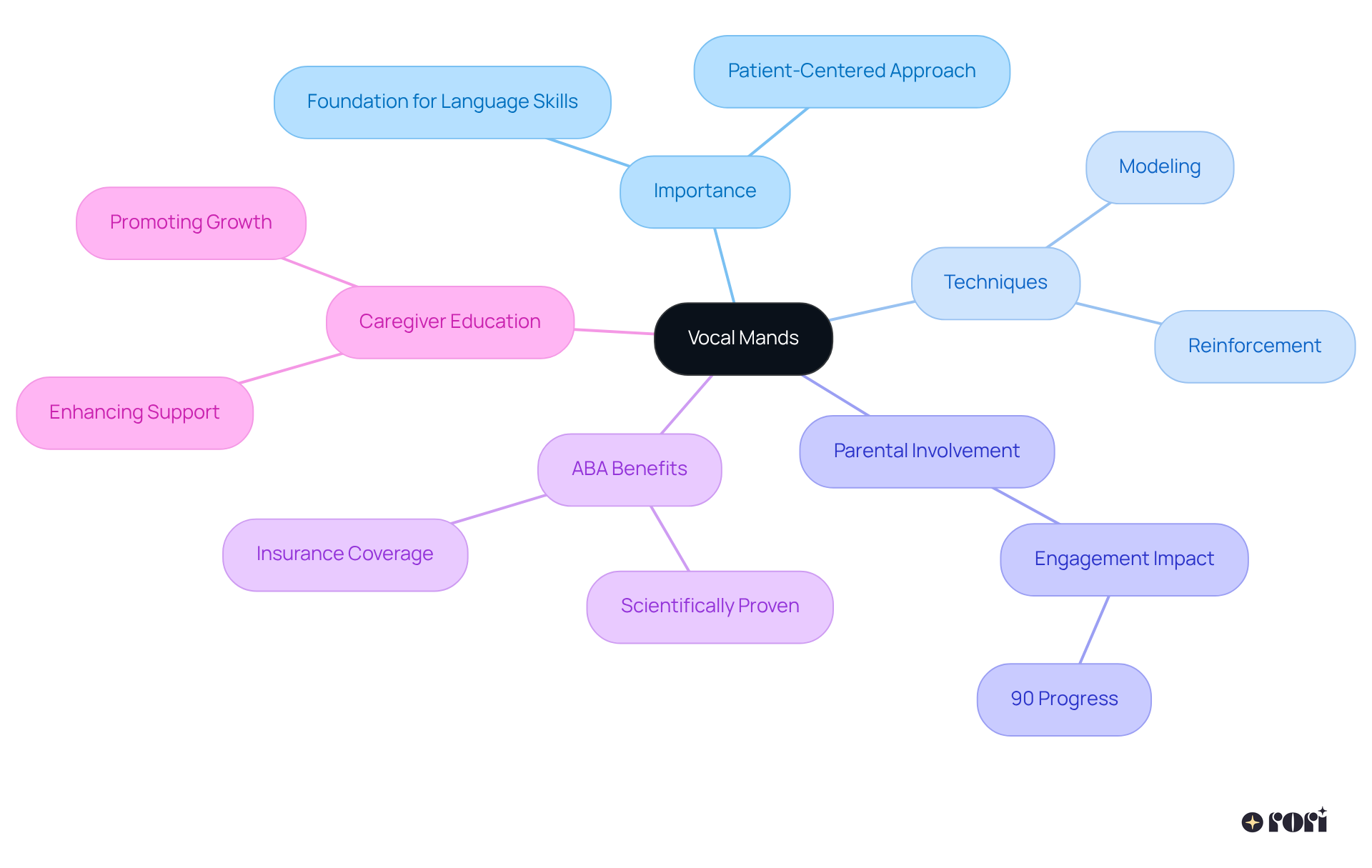
Non-vocal mands, like gestures and signs, are essential ways for kids to communicate without words. Imagine a young child pointing to a toy they want or using sign language to ask for help. Teaching these non-vocal skills is super important, especially for kids who might not have a lot of verbal abilities yet, as they represent different types of mands in ABA. By using visual aids and showing techniques, therapists can help these little ones express their needs without relying only on speech.
When parents learn about ABA principles and strategies, they feel more equipped to support their child's learning at home. This involvement not only boosts informed decision-making but also leads to better behavioral outcomes. It empowers caregivers and creates a collaborative environment where effective communication can thrive. Let’s explore this together and see how we can foster a supportive journey for our children!
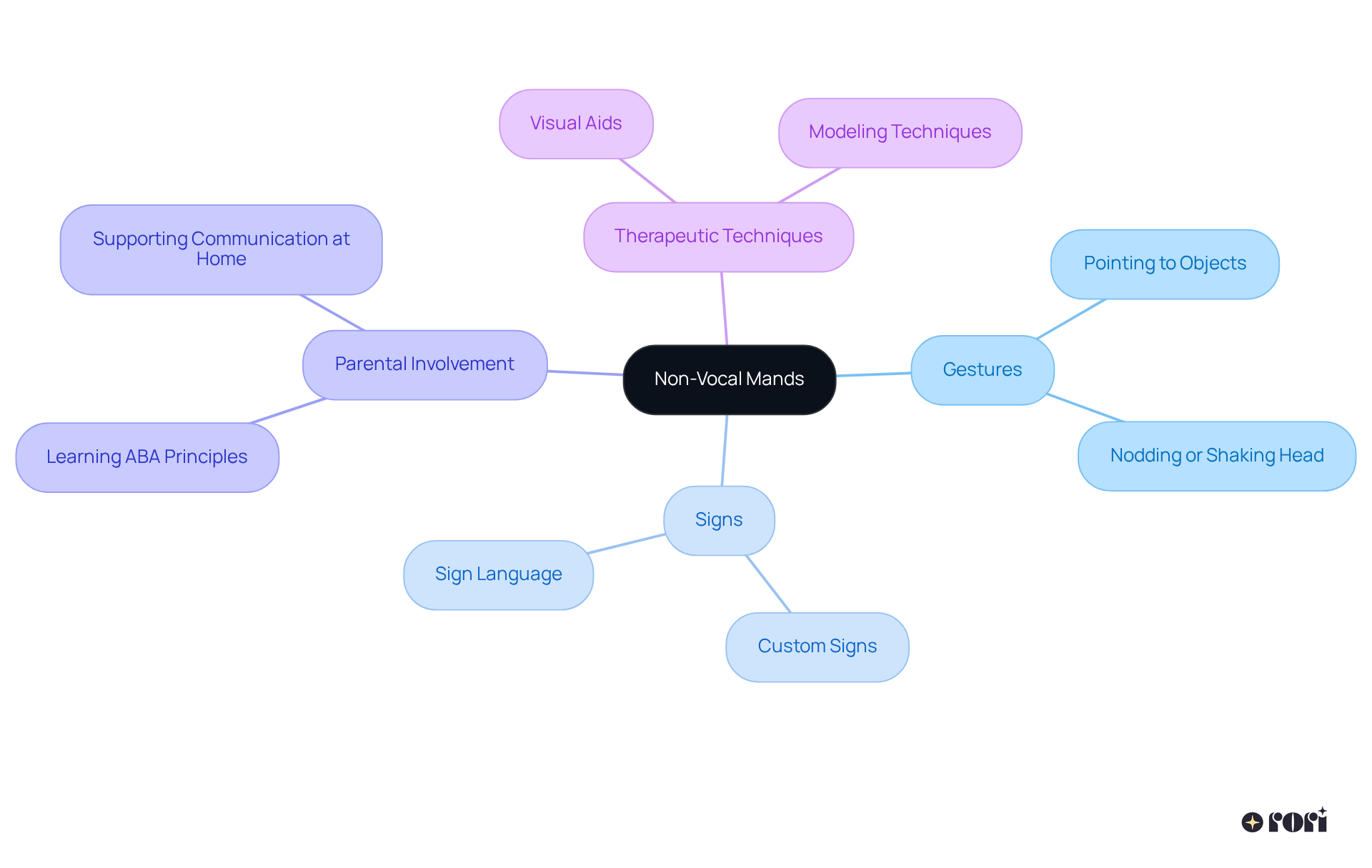
When it comes to asking questions, young learners can be encouraged to inquire with phrases like 'What is that?' or 'Where are we going?'. This skill is so important for sparking curiosity and getting involved in social situations. It’s a key part of Applied Behavior Analysis (ABA), which addresses the types of mands ABA to tailor to each child's unique needs. By giving kids opportunities to practice asking questions, therapists can help them build this vital communication skill.
Methods like role-playing and using visual cues can really boost learning and inspire kids to seek out information actively. Plus, when caregivers are equipped with ABA principles, they can better support their children’s learning and behavioral goals through various types of mands ABA. This leads to informed decision-making, improved behavioral outcomes, and a more cohesive approach to therapy at home. Let’s explore this together and see how we can make a difference!
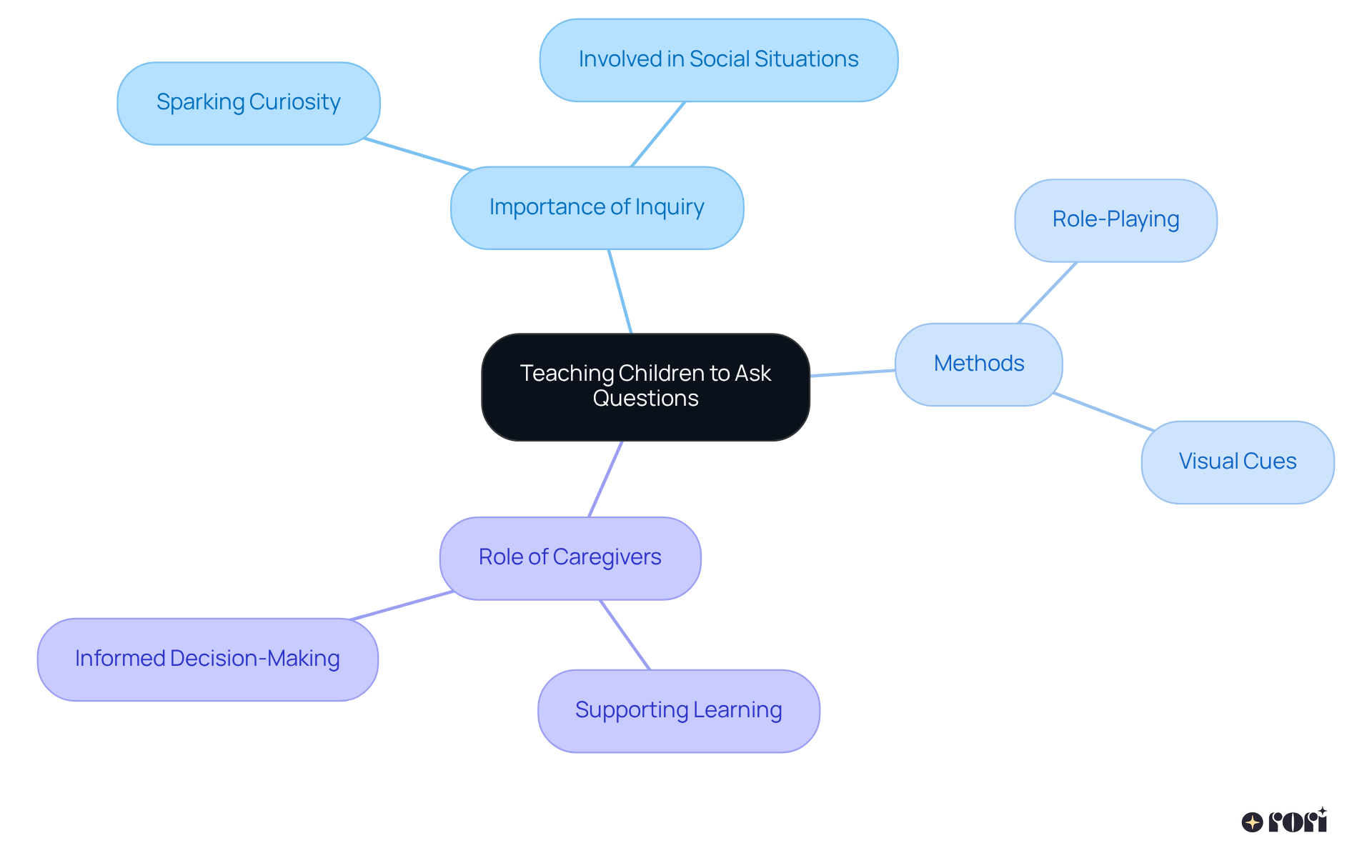
Basic mands are the simplest forms of requests, like asking for a toy or a snack. These foundational skills are often the first types of mands ABA introduced in ABA therapy, which help little ones learn to express their needs effectively. By strengthening these fundamental requests, which are types of mands ABA, through positive reinforcement, children can build confidence and start to expand their communication skills. 😊
When parents are trained in ABA principles and strategies, they feel more equipped to support their kids' learning at home. This active involvement not only complements professional interventions but also creates consistency, leading to better behavioral outcomes and less stress for caregivers. Empowered caregivers, who understand the importance of these basic skills, can make informed choices that positively impact their children's development, ultimately enhancing family dynamics. Let’s explore this together!
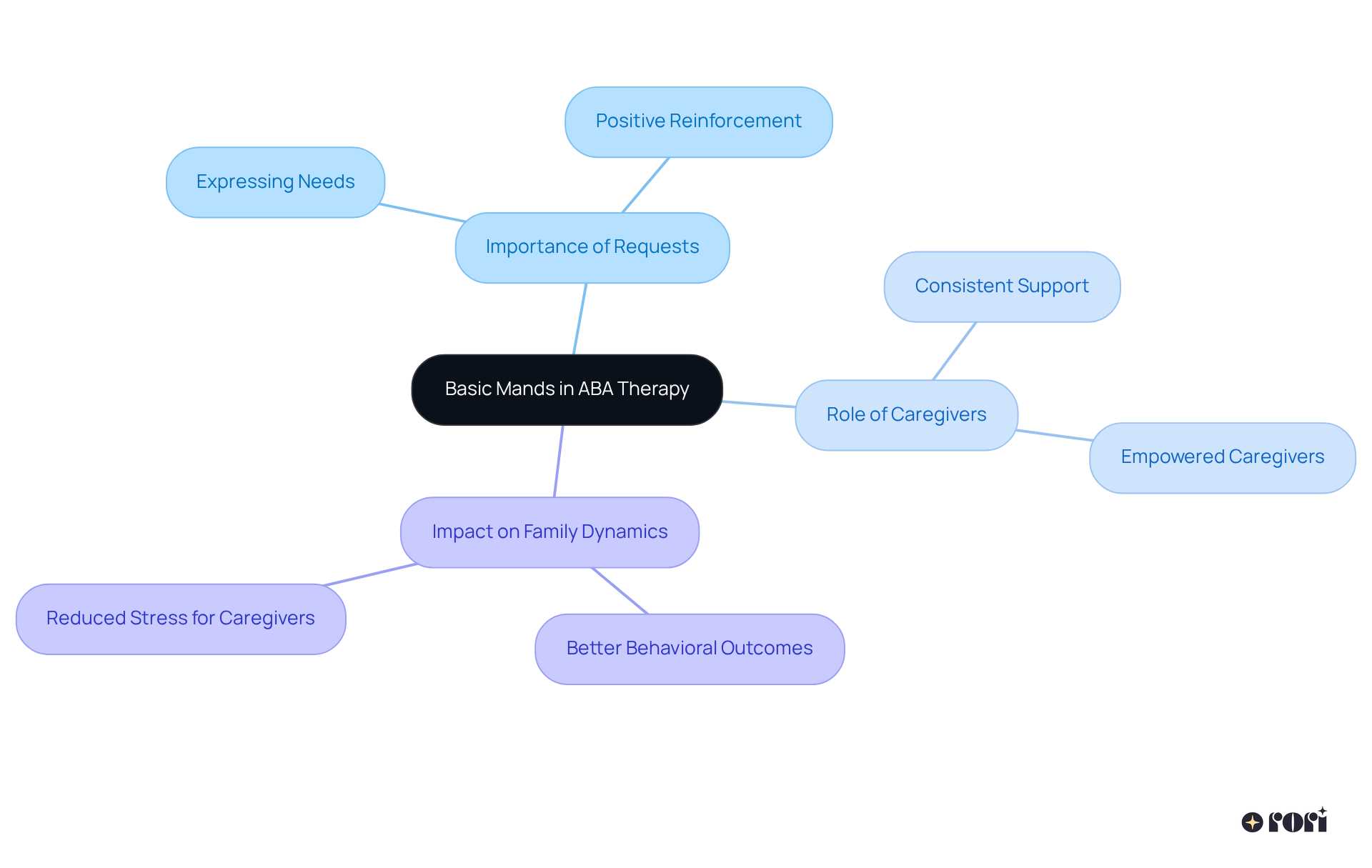
Advanced types of mands aba focus on helping kids learn to make more complex requests, such as 'Can I have the red ball, please?' or 'I want to play outside after lunch.' These types of mands aba require a bit more language processing and understanding, which is such an important skill! Therapists can really enhance this learning through fun activities, like social interaction group therapy. This encourages kids to express their needs in more advanced ways while they interact with their peers.
Techniques like modeling, prompting, and using visual supports are effective examples of the types of mands aba that can be super helpful in this process. Studies show that when kids practice types of mands aba, they not only boost their communication skills but also build confidence in expressing what they want. Educator training is key here; when we equip providers with ABA principles and strategies, they can offer better support at home, make informed decisions, and actively help their kids achieve their behavioral goals.
Speech-language pathologists emphasize how important it is for kids to have chances to engage in peer interactions. These exchanges can really strengthen their ability to use advanced mands effectively. By creating a nurturing environment that encourages these intricate requests, therapists and empowered caregivers can make a big difference in developing types of mands aba and enhancing overall communication skills. Let’s explore this together and support our kids every step of the way!
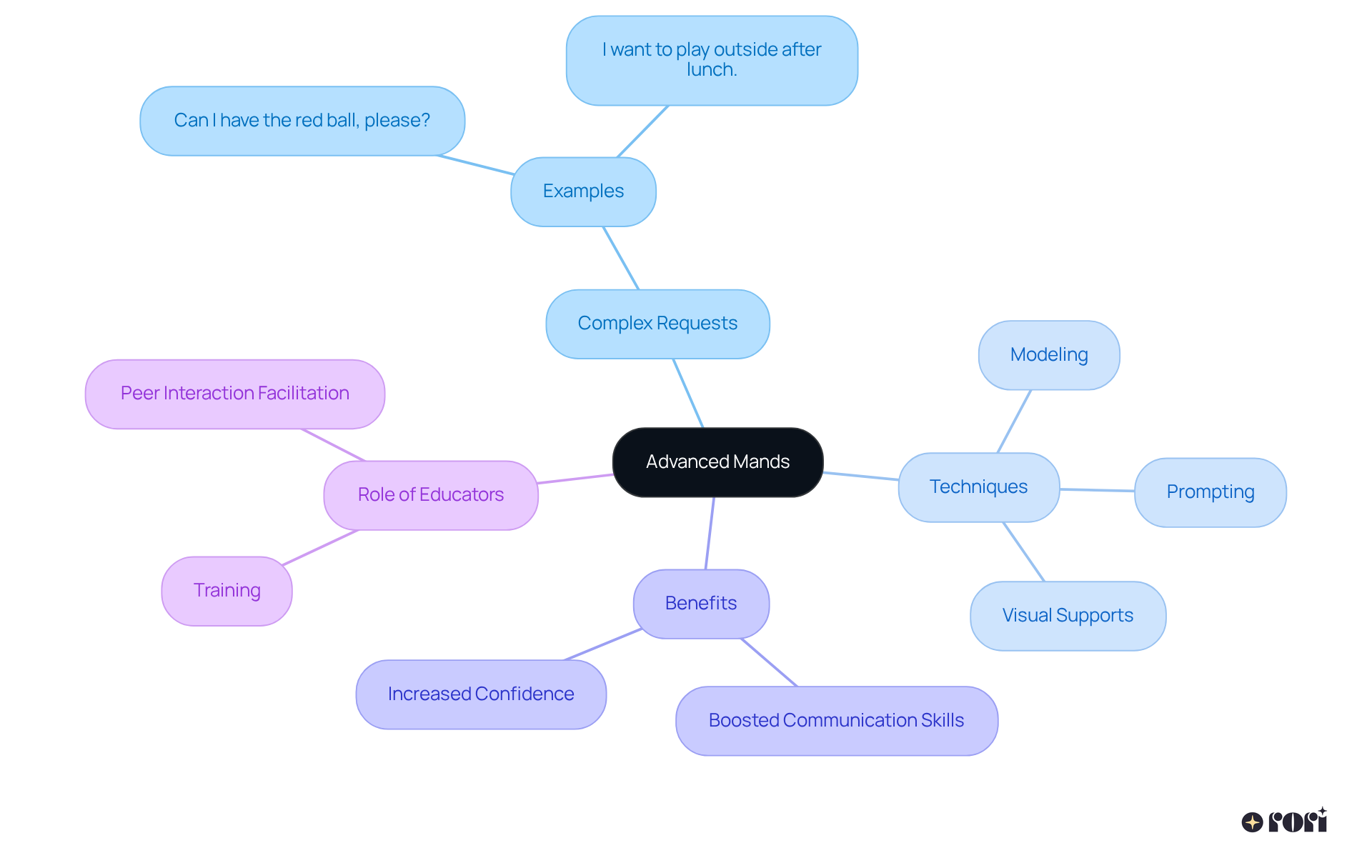
Manding training isn't just about teaching kids to ask for things; it's about helping them become independent through various types of mands aba! When young people learn the types of mands aba to express their needs effectively, they start to feel more in control of their world. This sense of empowerment can boost their self-esteem and reduce frustration.
By consistently encouraging effective types of mands aba, adults can help kids build the confidence they need to express themselves in various situations. Plus, as caregivers learn more about ABA principles and strategies, they become better equipped to support their children's communication goals. This active involvement not only makes mand training more effective but also leads to better behavioral outcomes, creating a happier family environment.
Let’s explore this together! We're here to help you every step of the way!
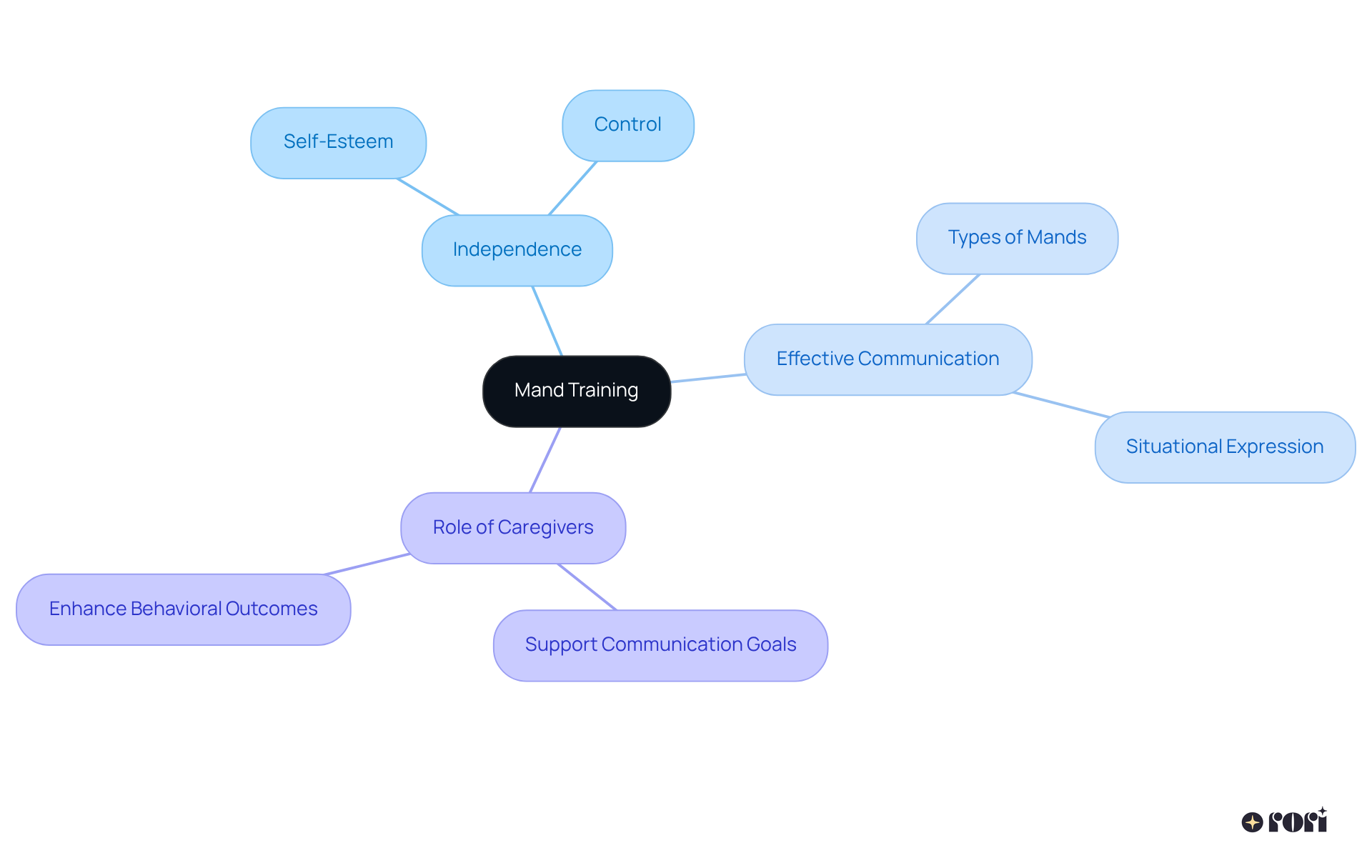
Generalization of types of mands aba focuses on helping our little ones use their communication skills in various places, such as home, school, and the community. To make this happen, therapists can set up fun practice opportunities that feel just like real life. These activities have proven to be super effective in boosting the types of mands aba skills! Plus, when parents actively reinforce these behaviors outside of therapy, it creates a consistent environment and empowers them to be real change-makers in their kids' lives.
This comprehensive approach not only enhances communication but also enriches social interactions, letting our youngsters thrive in their daily routines. And let’s not forget about caregiver training! It’s a fantastic way to help parents understand ABA principles better, so they can make informed choices that positively impact their child’s journey.
As Chris Packham wisely puts it, 'Autism is not a disease, it’s a difference.' This really highlights the unique perspectives that young individuals with autism bring to their communication experiences. Let’s explore this together!

Reinforcement strategies are essential for encouraging successful types of mands aba within Applied Behavior Analysis (ABA), a therapy that’s tailored to meet each individual's unique needs. Think about positive reinforcement—like giving verbal praise or tangible rewards. These can really motivate kids to use their mands more often! For example, when a child successfully asks for a toy, offering immediate praise or even the toy itself can really strengthen that behavior.
By consistently using these reinforcement methods, caregivers are not just helping kids understand the value of effective communication; they’re also deepening their own grasp of the types of mands aba and other ABA principles and strategies. This active involvement boosts their ability to support their children's behavioral goals, leading to better outcomes and a happier family dynamic. Let’s explore this together and see how we can make a difference!
Parents, you play such a vital role in your child's mand training journey! When you actively engage in the learning process, you can really make a difference. By reinforcing the skills taught during therapy sessions, you help enhance your child's communication abilities. Simple strategies, like demonstrating requests during daily tasks and offering prompt reinforcement, not only support your child's development but also align with the adaptive treatment plans that get updated based on progress reports.
Plus, providing opportunities for your child to practice types of mands in various contexts can significantly reinforce their learning and enhance behavioral outcomes. Your active involvement empowers you with ABA principles and strategies, fostering informed decision-making that positively impacts your child's growth. Let’s explore this together and see how you can make the most of these moments!

Effective communication skills are so important for our children, especially those in ABA therapy. By focusing on different types of mands—like vocal, non-vocal, and advanced mands—this article shines a light on how personalized approaches can help children express their needs and desires more effectively. With a focus on tailored mand training, we ensure that each child gets the support they need to thrive in their communication journey, building their independence and confidence.
One key insight is the vital role of parent involvement in reinforcing learned skills. When caregivers actively engage in their child's learning, it creates a supportive atmosphere that boosts communication outcomes and strengthens family dynamics. Plus, reinforcement strategies play a crucial role in encouraging successful manding behavior, and it's essential to generalize these skills across different environments.
Ultimately, mand training isn’t just about teaching children to ask for things; it’s about equipping them with the tools to navigate their world confidently. By embracing personalized ABA therapy methods and fostering collaboration between therapists and families, we can make significant strides in promoting effective communication skills. Let’s continue to support our children in this vital aspect of their development, ensuring they feel empowered to express themselves in every situation. Together, we can explore this journey and make a real difference!
What is Rori Care's approach to ABA therapy?
Rori Care focuses on a personalized approach to ABA therapy that emphasizes effective communication. They evaluate each child's unique needs and create tailored behavior intervention plans to help them communicate better.
What are mands in the context of ABA therapy?
Mands are requests made by individuals to express their needs and desires. They can be vocal, using words, or non-vocal, using gestures and signs.
How do vocal mands enhance communication skills?
Vocal mands involve children using their words to express needs, such as saying 'juice' when thirsty. This practice is crucial for developing future language skills and fits into a patient-centered approach.
What techniques are used to encourage vocal mands in children?
Techniques like modeling and reinforcement are used to boost children's confidence in vocalizing their needs. Parental involvement is also important, as engaged parents can significantly enhance their child's progress.
Why is ABA therapy considered valuable for families?
ABA therapy is the only scientifically proven treatment for autism that is covered by insurance, making it an essential resource for families seeking support for their children's development.
What are non-vocal mands and why are they important?
Non-vocal mands are ways for children to communicate without words, such as using gestures or sign language. They are particularly important for children with limited verbal abilities, allowing them to express their needs effectively.
How can parents support their child's learning in ABA therapy?
By learning about ABA principles and strategies, parents can feel more equipped to support their child's learning at home, which leads to better behavioral outcomes and fosters a collaborative environment.
What is the ongoing process in Rori Care's therapy approach?
Rori Care continuously assesses and adjusts their intervention plans, modifying strategies as needed to enhance results for each child, while also providing support to families throughout the therapy process.